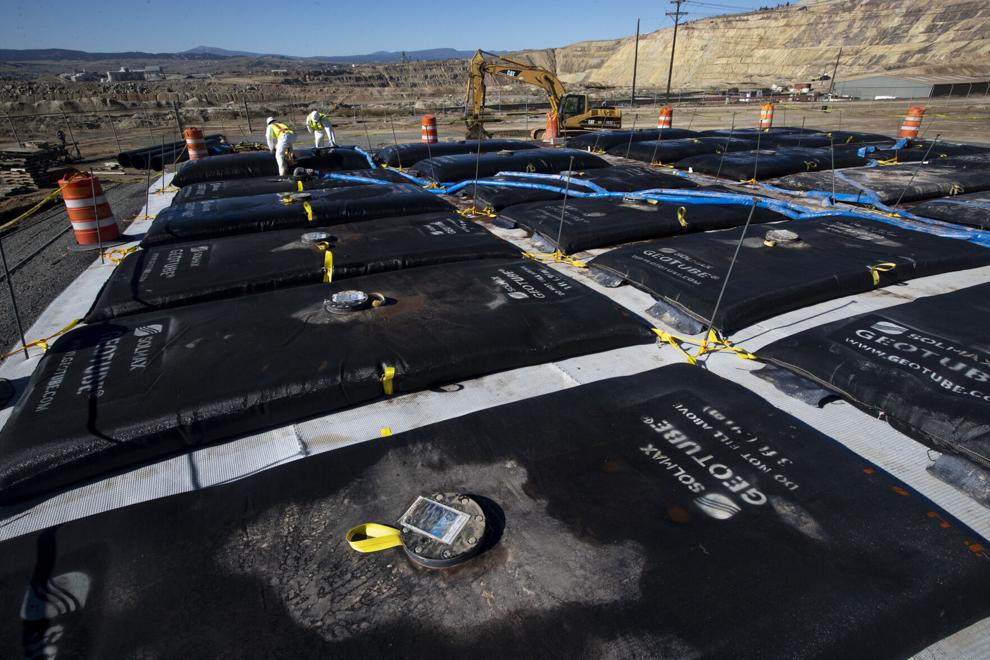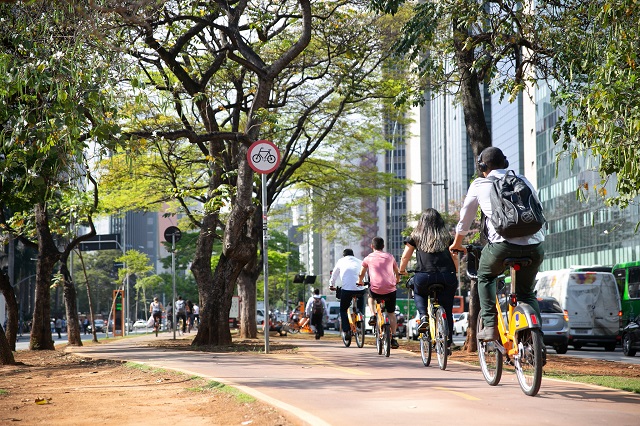Blog: The Falsehood of “Critical and Strategic” Minerals

In a recent CHE-Alaska webinar, featured speakers Austin Ahmasuk and Bonnie Gestring spoke on the deceiving portrayal of “strategic” minerals and how this label is used to justify dangerous extractive practices as essential to mineral demand in the U.S. and necessary for the transition to renewable energy. According to the Department of the Interior, a “critical and strategic” mineral is defined as a non-fuel (not oil or gas) mineral that is “essential” to economic or national security. However, this terminology is a guise used by the mining industry to sidestep environmental impact estimations, permitting processes, and public comment periods.
Austin Ahmasuk is the environmental justice co-director at Native Movement, a grassroots advocacy organization centered around Indigenized worldviews, Just Transition, community education, and environmental, climate, and gender justice.
Critical minerals have been touted as a green solution primarily to reduce air pollution and mitigate climate change — but they’re not pollution free. They still contribute to pollution in many ways, particularly in their manufacturing processes, especially mining for raw materials for lithium-ion batteries. These mining operations are responsible for deforestation and habitat destruction, and they often take place on Indigenous ancestral land.
“On this issue of critical minerals, I really think that society is teetering on the precipice of a profound transformation,” Ahmasuk said. “The ability to impact our future could be a way of human innovation — or we may spiral into an abyss of additional climate change.”
Ahmasuk spoke specifically about the proposed Graphite One mining project in the Kigluaik Mountains just north of Nome, where he was born and raised. This ancestral mountain range is a sacred place that encompasses Iñupiat culture, legend, and livelihood. The word “kigluaik” is an Iñupiaq word that translates to “wind that comes from everywhere.” The mining project is set to be situated next to the Imuruk Basin, the largest watershed on the Seward Peninsula and a traditional hunting and gathering place for fish, berries, and wildlife such as caribou, moose, salmon, seals, and beluga whales.

The graphite mine is presently in the exploration phase, but it is clear the potential impacts of this project are devastating. Ahmasuk noted the mine will lead to major environmental destruction of critical habitats used for subsistence fishing and hunting, with the potential to disrupt the landscape and significantly contaminate water bodies. The state of Alaska has some of the weakest and least enforced environmental regulations in the country, and Ahmasuk believes mine operators will seek the least amount of regulation and oversight possible. The mine will involve uncertain geotechnical risks and complex water management challenges that will impact operations, according to Graphite One’s pre-feasibility report.
Large-scale hard rock mining is especially problematic, as it is an invasive mining practice that taps into unmineralized ore bodies with the potential to release highly toxic metals. A large portion of the waste ore could be acid generating, which poses a significant risk to the environment as well as human health. If hard rock mines become acidic and health-protective water management practices are not in place, heavy metals (such as arsenic, lead, iron, etc.) can be liberated into the environment. Communities that rely on the basin’s water, fish, and waterfowl are very concerned about these risks.
It is still unclear how Graphite One plans to manage these complex water management issues. From its pre-feasibility study, we know that the corporation is evaluating water treatment methods that involve diverting and injecting wastewater into the Imuruk Basin, a large inland water body that is a refuge for marine mammals, waterfowl, salmon, and other fish. Notably, they are also considering changing water quality regulations for the Imuruk Basin to enable them to discharge wastewater into the estuary. The mine would require energy-intensive processes for the on-site refinement of ore prior to transportation to Washington state for final refinement.
All of these mining operations require a road to the site, as well as a deep-water port. These expenses are to be covered by the Department of Defense, which granted Graphite One $37.5 million, and the Bering Straits Native Corporation, which invested $2 million.
“We as taxpayers and shareholders of a Native Corporation, and the people of the state of Alaska — we’re subsidizing a foreign company’s profit,” Ahmasuk says. “It meets what I would consider the definition of a ‘false solution’ — investing and subsidizing a foreign company’s profit for this idea of ‘critical mineral’ development.”
Bonnie Gestring is the Northwest program director at Earthworks, an organization dedicated to protecting communities and the environment against the adverse effects of mining and energy development while seeking sustainable solutions.
In recent years, the growing climate crisis has required a rapid transition away from fossil fuels to renewable sources of energy to reduce greenhouse gases. The infrastructure for this transition, such as electric vehicles and solar panels, has resulted in a dramatic increase in the demand for the mining of the minerals needed to manufacture that infrastructure.
“There’s no doubt that we need to decarbonize, but it must be a just and equitable transition,” Gestring said. “It isn’t just and equitable and clean if we’re simply replacing one harmful, extractive industry — the fossil fuel industry — with another large harmful, extractive industry — the mining industry.”
The Ambler Road project is one example. The proposed 211-mile industrial access road is pushed by mining companies as necessary to access this abundance of critical minerals; however, these companies have yet to demonstrate there are viable amounts of these minerals to justify the economics of the project — much less the disastrous environmental and community impacts.
Every three years, the U.S. Geological Survey compiles a list of more than 50 minerals that they say are “critical” to this nation’s economy. The term “critical mineral” is very broad and the narrative is commonly misused; for this reason, Gestring prefers to use the term “transition minerals” to describe minerals that are important in renewable energy technologies.
Impacts of mining
Gestring discussed the ways that mining threatens communities, the climate, and ecosystems. Mining is incredibly carbon intensive, with metal mining and processing responsible for about 10% of global carbon emissions, according to a report by the U.N. As a result, relying primarily on new mining projects to obtain these minerals actually exacerbates the climate crisis. Moreover, since the richer deposits have already been mined, the industry has now turned to mining operations in increasingly lower-grade deposits, which translates to much larger volumes of waste and greater disturbances. According to the EPA, metal mining is also the nation’s leading source of toxic releases.
The impacts of mining cause disproportionate harm to Indigenous People. According to recent research, 97% of nickel, 89% of copper, 79% of lithium, and 68% of cobalt reserves, proposed mines, and processing facilities neighbor Native reservations (within 35 miles) in the Lower 48. A similar increase in mining activity is anticipated in Alaska; Graphite One’s proposal is just the first. This increase will have significant impacts on traditional tribal lands and nearby areas that are important culturally and for hunting, fishing, and gathering. These frontline communities are most vulnerable to the effects of climate change yet have done the least to contribute to the climate crisis.
Pathways forward
To frame this discussion of solutions, Gestring emphasized two key findings in research from the University of Technology in Sydney, Australia. The first is a set of projections for transition minerals demand, which is primarily driven by transportation, specifically electric vehicle batteries. There are a handful of minerals of particular concern due to their high demand and significant impact, including cobalt, nickel, lithium, manganese, and some rare earth elements.
The second finding Gestring discussed examines how these minerals can be obtained without relying primarily on large-scale extraction. The report found that there can be a substantial reduction in the primary demand for these minerals by 2040 by recycling EV batteries — by as much as 25-55%, depending on the minerals.
Gestring highlighted three main principles that are crucial in moving forward with transition minerals.

A geotube is prepared to be de-watered near the Horseshoe Bend Water Treatment Plant at the Montana Resources mine in Butte. (Joseph Scheller, The Montana Standard)
1. Recirculate
Significant policy intervention is critical to incentivize recycling. For example, the European Union’s battery directive mandates recycled content, longer battery life, and product takeback requirements. Reprocessing of mine waste must be required so that minerals are obtained from material that is already above ground, rather than initiating new mining. At Montana’s Berkeley Pit mine, the nation’s largest Superfund site, industry is exploring methods of concentrating the rare earth minerals contained in the acid mine waste stream and processing them for removal, rather than sourcing them from new mining operations.
2. Reduce Demand

Bike share in São Paulo, Brazil. (Joana Oliveira, WRI Brasil)
It is important to reduce demand by shifting the way we consume and use transportation. For example, a combination of better recycling and smaller car size was found to reduce projected lithium demand by as much as 92% by 2050 in a recent report. Similar benefits are available through a shift toward more efficient and available mass transit, as well as a greater emphasis on a circular economy. This means designing products to use fewer minerals and prioritizing longevity and recyclability.
3. Reform the Rules
Lastly, the mining that does occur needs to be held to the highest social and environmental standards. In the US, mining on federal public lands is still governed by the Mining Law of 1872, which declared all valuable mineral deposits in United States land to be free and open to exploration and purchase. The law played a significant part in colonizing the West, with devastating consequences for Indigenous People. It prioritizes mining over all other land uses, allowing mining companies and individuals to stake an indefinite number of claims and hold those claims for an indefinite period.
The Clean Energy Mineral Reform Act introduced last year incorporates important provisions to enhance protections for communities and the environment, as well as ensuring the federal government is compensated for the removal of valuable ore. Recently, President Biden’s Interagency Working Group (IWG) on Mining Reform released its recommendations, proposing sixty measures to update the way mining is conducted, including additional protections for communities and the environment. New mining initiatives should be centered around Indigenous Right to Free, Prior, & Informed Consent (FPIC) as enshrined in the UN Declaration on the Rights of Indigenous Peoples.
Gestring emphasized, “In order to combat climate change, sourcing minerals in the most energy-efficient way is really critical, and mining is not that. We can’t mine our way to a clean energy economy.”
Visit the webinar page to watch the full recording and learn more.
